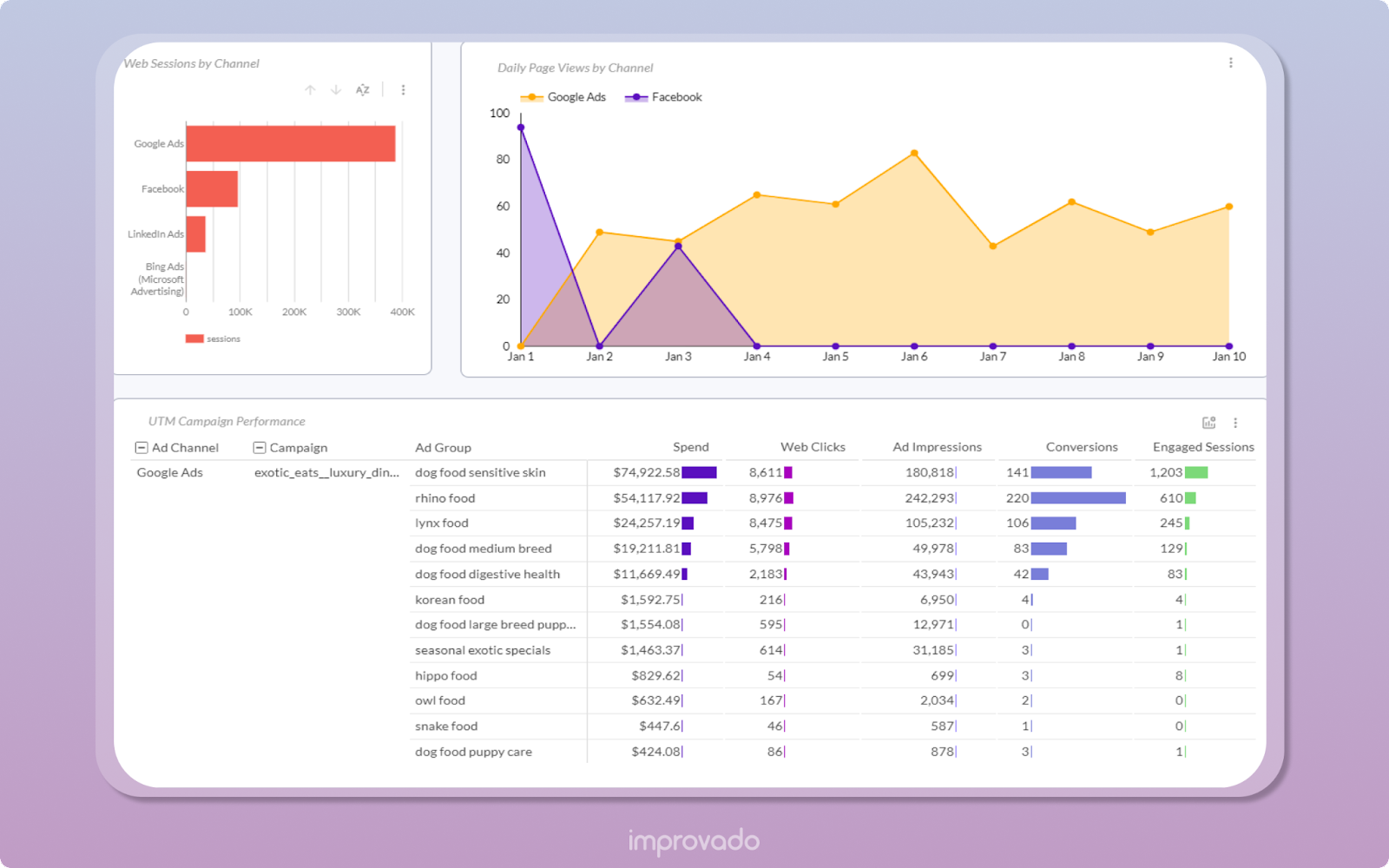CPM, CPC, CPA, CTR, CR, ROI. These acronyms are more than just random letters placed together. They are all examples of media pricing models and metrics for success that you should be aware of when running a campaign. You have probably heard or read some of these terms in the past, but may not fully understand what they mean and how they could affect your bottom line. We’re here to help break down these media math models and digital marketing formulas into understandable information that you can use the next time you hear one of these acronyms.
According to Jason DeMers, author of The Definitive Guide to Marketing Your Business Online and contributing writer at Forbes, “regularly checking these media math formulas and digital marketing metrics will provide you with an accurate pulse of the health of your digital marketing campaign. Over time, you’ll be able to refine your tactics, closely examine which strategies work best and why, and end up with a steady marketing rhythm that can generate more than enough leads to cover your marketing costs and deliver a significant profit.” Understanding digital marketing math is crucial for success in the industry.
So let’s dive right in and start covering these media math formulas. The first group we’re going to cover are digital media pricing models.
Digital media pricing models
The first group we’re going to cover are digital media pricing models. These digital marketing formulas are essential for effective campaign management.
1. CPM (Cost-per-Thousand Impressions)
This media math formula is a performance-based pricing model that tracks and measures cost effectiveness of online impressions, which are sold by the thousand. The CPM formula is the most common pricing model used in the media industry.
2. CPC (Cost-per-Click)
This digital marketing formula will help you understand and compute how much you will pay each time your audiences engage with your media or advertisement by clicking on it. This media math formula is essential for effective budget management.
3. CPA (Cost-per-Action)
This is a media math formula and pricing model in which payment by your company is based solely on your audience completing a qualifying action(s) that you define.
Some examples of actions are:
- Completing a sign-up form
- Filling out a survey
- Completing a purchase
In this situation, your KPI (Key Performance Indicator) will be the “action” that needs to be completed. For this model, that means whatever you are measuring to judge the success of your campaign is what you will divide into your media cost. On a grander scale, this digital marketing formula can measure the effectiveness of any campaign action.
Performance metrics
The second group of media math formulas we’re going to cover are performance metrics. These digital marketing formulas are essential to fully comprehending a campaign’s success.
1. CTR (Click-Through-Rate)
The click-through rate model is simply a ratio of exactly how many advertisements are seen by audiences, in comparison to how many people are actually engaging with your advertisements by clicking on them. Calculating your click-through rate is one way to measure the effectiveness of your advertisements. This media math formula is widely used in the industry.
2. Conversion Rate
This digital marketing formula calculates the percentage of audience members who take a desired action defined by your company such as purchasing a product, registering for a membership of some kind, or subscribing to your company’s newsletter.
In order to achieve a high conversion rate, the interest level of the visitor needs to be high. This can be improved by making sure your advertisements are reaching the visitor at the right place at the right time in their path to purchase.
Your company will also need to ensure that the offer is attractive enough for the visitor to actually complete the desired action. Typically, smaller, less-intensive actions have higher conversion rates. This media math formula is crucial for understanding audience engagement.
3. ROI (Return on Investment)
The return on investment model calculates the ratio of profits or losses to the amount that was originally invested in the advertisement or media. This media math formula and metric can be difficult to calculate with the growing number of channels from display, SEO, and pay per click working together in one advertisement. However, mastering this digital marketing formula is key to evaluating the financial success of your campaigns.
Pacing metrics
This is the third group of digital marketing metrics on our list. These metrics help you track the progress of your ad campaign over time and ensure your campaign is on schedule.
Daily Pacing Index
The daily pacing index is one of the essential media planning formulas used to measure the progress of your ad campaign on a day-to-day basis. By calculating the daily pacing index, advertisers can determine whether their campaigns are running at the right pace and make adjustments accordingly to meet their goals.
Weekly Pacing Index
Similar to the daily pacing index, the weekly pacing index is a crucial media formula that measures the progress of your ad campaign on a week-to-week basis. It helps advertisers understand if their campaigns are running at the right pace and make any necessary adjustments to reach their goals.
Days in Campaign
Understanding what media math is includes calculating the days in a campaign. Days in campaign is a simple formula that calculates the total duration of your ad campaign. This metric is important for planning and tracking the progress of your campaigns and is often used in other media formulas.
Days Elapsed in Campaign
Days elapsed in the campaign is another marketing math metric that calculates the number of days that have passed since the start of your campaign. This helps advertisers monitor the progress of their campaigns and make any necessary adjustments to ensure they reach their goals.
Efficiency Metrics
These digital marketing metrics help you measure the cost-effectiveness of your ad campaigns, allowing you to optimize your ad spend and make more informed decisions.
Percentage of Delivered Impressions
Percentage of delivered impressions is an important metric in digital marketing math, which helps you understand how many impressions your campaign has delivered compared to the total number of impressions that were booked. This helps advertisers assess if their campaigns are on track and reaching the desired audience.
Cost per Point (CPP)
Cost per Point (CPP) is an essential media formula that calculates the cost efficiency of your ad campaign. By dividing the total budget by the total GRPs, advertisers can assess how much they are spending for each GRP, which helps them optimize their ad spend and make more informed decisions.
Reach & Visibility Metrics
The final group of media math metrics in our article. Reach and visibility metrics help you assess the overall impact and visibility of your ad campaigns, helping to increase brand awareness and engagement.
Total Gross Rating Points (GRPs)
Total Gross Rating Points (GRPs) is a media planning formula that measures the overall reach and frequency of your ad campaign. GRPs are calculated by dividing the booked impressions by the target demographic population. This metric is useful for comparing the effectiveness of different campaigns and understanding the overall impact of your ads on your target audience.
Share of Voice (SOV)
Share of Voice (SOV) is a crucial digital marketing formula that measures the percentage of your ad impressions in relation to the total number of available impressions within a specific ad space or platform. A higher SOV indicates greater visibility and prominence for your ads, which can lead to increased brand awareness and engagement.
All of the media math formulas and digital marketing metrics mentioned above should be closely monitored throughout the duration of your campaign. Comparing the performance over time can help you identify optimization opportunities to more efficiently spend your budgets. Utilizing these media math formulas and digital marketing formulas will ensure better decision-making and campaign effectiveness.
How to keep track of your marketing metrics
Marketing platforms usually have a command center where you can find your metrics and dashboards to stay updated about the performance of your campaigns. Keeping a close eye on these digital marketing formulas and media math formulas will help you make better decisions.
Why gathering your metrics manually is completely ineffective
Manual data collection poses multiple threats to your marketing analytics:
- The risk of human error and data discrepancies. Manual data collection is vulnerable to incorrect data entry. Even if you make no mistakes, data from different sources might have some discrepancies due to different naming conventions and calculation methods used across different platforms. Discrepancies most of the time render your data useless.
- Time-consuming data collection. Collecting data manually from various sources such as ad platforms, CRM systems, and social media channels can be an overwhelming and extremely labor-intensive task, especially for large and complex organizations with multiple regions and markets. Instead of putting their data to use, marketers often poke around in spreadsheets to gather all the data in one place.
- The roadblock to scalability. As organizations grow and their marketing efforts become more complex, manual data collection becomes increasingly inefficient and prone to errors. It may not matter to teams that run ads across one or two platforms, but when the number exceeds ten platforms, the problem becomes acute. This can result in a slow-down of the entire marketing analytics process, causing delays and frustration for stakeholders.
- Lack of real-time insights. Manual data collection is also limited in its ability to provide real-time insights into marketing campaigns. The delay in collecting and processing data can lead to outdated information, which can be detrimental to campaign optimization and decision-making. For example, if a marketer discovers that a campaign is underperforming several days after its launch, valuable time and resources have already been lost.
So, what's the solution?
Optimize your reporting with a marketing analytics platform
A well-designed marketing analytics platform is the best solution when you need to automate your marketing reporting and start making sense of your metrics. Platforms like these take care of every step of your marketing data journey, from extracting it from all of your sources to loading it in a cross-channel dashboard.
Let's take Improvado as an example. The platform extracts data from 500+ marketing sources to centralize it in a single, easily-accessible storage.
While doing it manually, marketers have to take care of numerous things. Data mapping, data deduplication, getting rid of redundant data, and many other things that don’t really fall into a regular marketer’s area of responsibility.
Improvado takes care of this problem, delivering analysis-ready insights right to marketers’ hands. Eventually, teams can spend more time on putting their data to use and optimizing campaigns rather than dealing with routine data processes.
What’s more, Improvado provides dashboard templates for a range of rmaketing use cases for any visualization tool of your choice (Google Data Studio, Looker, Power BI, etc.). Simply choose a template you need, and Improvado will streamline the required data to provide a real-time view of your marketing metrics.

So, how do you automate your marketing reporting?

.png)
.jpeg)



.png)
